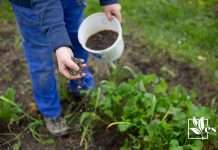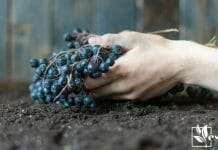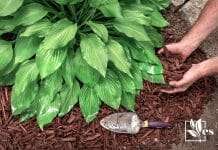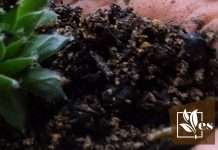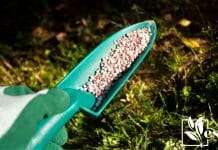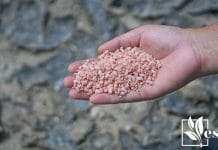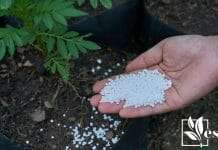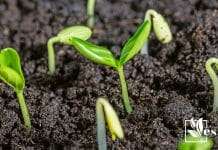As a gardener, I understand that the foundation of any thriving garden is healthy soil. Good soil supports robust plant growth by providing necessary nutrients, retaining moisture, and fostering adequate air circulation around plant roots. Observing the soil’s texture, color, and the presence of living organisms can offer insights into its health. Healthy soil usually has a loose, crumbly texture that allows for easy root growth and water permeability.
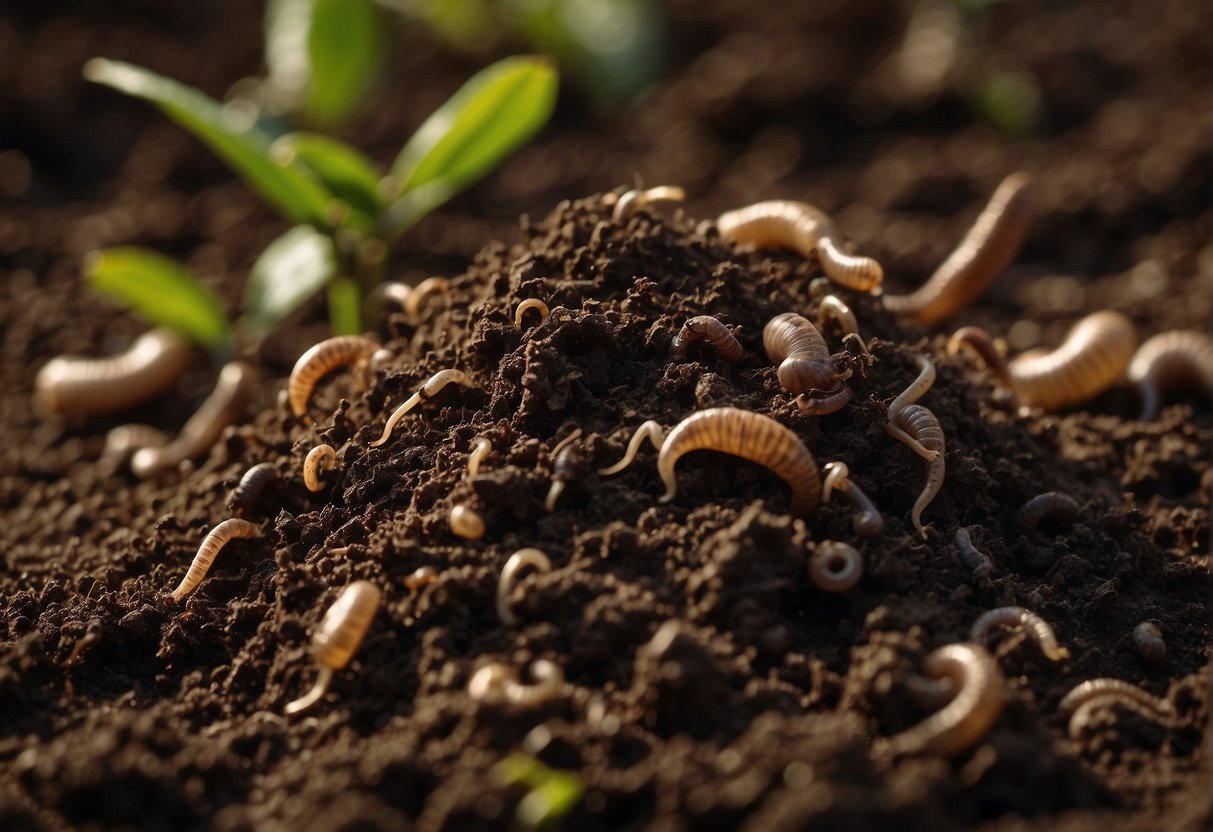
I’ve noticed that one of the most evident indicators of fertile soil is its rich, dark hue, which is typically a sign of high organic matter content. This organic matter, which includes decomposed plants and animal residue, enriches the soil and sustains a vibrant ecosystem within it. A thriving soil ecosystem, teeming with earthworms, beneficial insects, and microorganisms like fungi and bacteria, is also a hallmark of soil health. These organisms play a critical role in breaking down organic materials, fixing nitrogen, and improving soil structure, which benefits plant growth.
A good practice I follow is checking the health of soil before planting. I look for a well-aerated structure—indicative of the right balance between sand, silt, and clay—that supports root development and water drainage. I also observe the soil life, looking for earthworms and other creatures that signify biological activity essential for nutrient cycling. Another aspect is the root systems of existing plants; they should be well-spread and not encased in soil, showing that the soil has a good structure and is not compacted. Soil that meets these criteria is likely to support healthy plant growth, leading to a lush and productive garden.
JUMP TO TOPIC
Soil Composition and Structure
Good soil is akin to a well-stocked pantry for plants, containing all they need to thrive. Recognizing fertile and healthy soil is rooted in understanding its composition and physical properties.
Essential Nutrients and Minerals in Soil
My observations lead me to conclude that soil is a complex blend where several elements meet, making it a nurturing medium for plant growth. Nutrients like nitrogen, phosphorus, and potassium are pivotal, while minerals such as calcium, magnesium, and sulfur support various plant functions. Organic matter is also crucial, as it decomposes into humus, enriching the soil with essential nutrients and improving its water retention capabilities.
- Nitrogen (N) – for leaf growth
- Phosphorus (P) – for root and flower development
- Potassium (K) – for overall plant health
Physical Properties: Texture, Structure, and Color
The texture of soil is defined by the proportion of sand, silt, and clay. Loamy soil, with a balanced mix of these three, is often the most desirable due to its drainage and nutrient-retention properties.
Soil structure, on the other hand, refers to the clumping of the soil particles. Robust structure allows for air and water movement and supports root growth. It is the glue from organic material and microorganisms that bind these particles into aggregates.
| Soil Component | Role |
|---|---|
| Clay | Holds nutrients, slows water drainage |
| Sand | Enhances drainage, reduces nutrient hold |
| Silt | Retains water, has fine texture |
| Organic Material | Supplies nutrients, improves structure |
As for color, it can be a general indicator of soil quality: dark soils are typically rich in organic matter, while red or yellow soils may denote the presence of oxidized iron minerals. But I always regard color as one clue among many; the true test of soil’s quality is its biological activity and physical texture.
Soil pH: Its Role and Regulation
Soil pH is fundamental to gardening success, influencing nutrient availability and plant health. Let’s explore soil pH’s impact on plant growth and how it can be regulated naturally.
Understanding Soil pH and Plant Growth
The pH scale, which ranges from 0 (acidic) to 14 (alkaline) with 7 being neutral, is vital for plant roots to absorb nutrients effectively. Most plants flourish in slightly acidic to neutral soil (pH 5.0 to 7.0). A pH imbalance can lead to nutrient deficiencies, even if soil is rich in nutrients, as plants struggle to absorb what they need from overly acidic or alkaline conditions.
💥 Soil pH’s influence:
- Acidity: Lowers pH and affects nutrient solubility
- Alkalinity: Increases pH and can ‘lock’ nutrients away
I can improve my garden’s soil pH by adding natural amendments based on the initial pH measurement. Testing soil pH is a simple process and can significantly impact my plants’ health and productivity.
Natural Amendments for pH Adjustment
To raise acidic soil pH, limestone is a reliable choice, whereas sulfur can lower an alkaline soil’s pH. Here’s how they work:
- Limestone: Adds calcium or calcium and magnesium, depending on the type, reducing soil acidity.
- Sulfur: Converts to sulfuric acid through bacterial action, thus lowering soil pH over time.
Applying amendments requires careful consideration of the existing soil conditions and the specific needs of the plants I’m growing. Over time, I’ll adjust the pH gradually, allowing my plants to acclimate and avoid shock. Monitoring the changes and using natural materials helps me maintain a thriving garden ecosystem.
Maintaining and Improving Soil Health
In my experience, soil health is a dynamic and salient feature of sustainable agriculture. It’s the bedrock of a thriving farm ecosystem, and understanding how to sustain and enhance soil fertility through organic matter and proper testing practices is key to agricultural success.
Organic Matter and Its Impact on Fertility
I find that integrating organic matter into soil is critical for maintaining fertile land. Organic material, such as compost or crop residues, boosts soil structure, enhancing water retention and aeration. This provides a hospitable environment for beneficial microorganisms like earthworms, bacteria, and fungi, all of which contribute to nutrient cycling and plant health.
Moreover, maintaining organic matter levels is vital. It’s a continuous process that requires regular soil cover and minimized disturbance.
Effective Soil Testing and Amendment Practices
The importance of soil testing in maintaining soil health cannot be overstressed. By regularly conducting soil tests, I gain vital information on soil pH, nutrient levels, and compaction, which informs my decisions on what amendments or fertilizers to apply.
Tailoring soil amendments based on test results can drastically improve fertility and create conditions favorable for high-yielding crops. This precise management saves money by reducing unnecessary or excessive input usage and, crucially, shields the ecosystem from potential nutrient runoff.
Strategies for Sustainable Soil Management
💚 Key Points to Remember
In sustainable soil management, maintaining soil fertility is essential. I focus on utilizing organic fertilizers and fostering soil life through methods that protect the soil structure and enhance its biological activity.
Incorporating Organic and Natural Fertilizers
I prioritize the use of organic fertilizers like compost and coffee grounds to boost soil fertility. These natural inputs benefit the soil in several ways:
- Compost improves soil structure, aeration, and water retention.
- Coffee grounds add nitrogen, a vital nutrient for plant growth.
👨🏻🌾 Organic matter from mulching also contributes to soil health, suppressing weeds and retaining moisture.
Enhancing Soil Life with No-Dig Gardening and Cover Crops
In my no-dig gardening approach, I avoid disturbing the soil to protect the complex web of living organisms beneath the surface. This practice has several benefits:
- It encourages a robust soil ecosystem, which facilitates nutrient cycling.
- Cover crops, such as clover or rye, are planted to protect bare soil and attract beneficial insects like 🐝 and 🐞.
By using mulch and cover crops, I also avoid soil erosion, retaining the soil’s structural integrity and enhancing its ability to support plant life.



